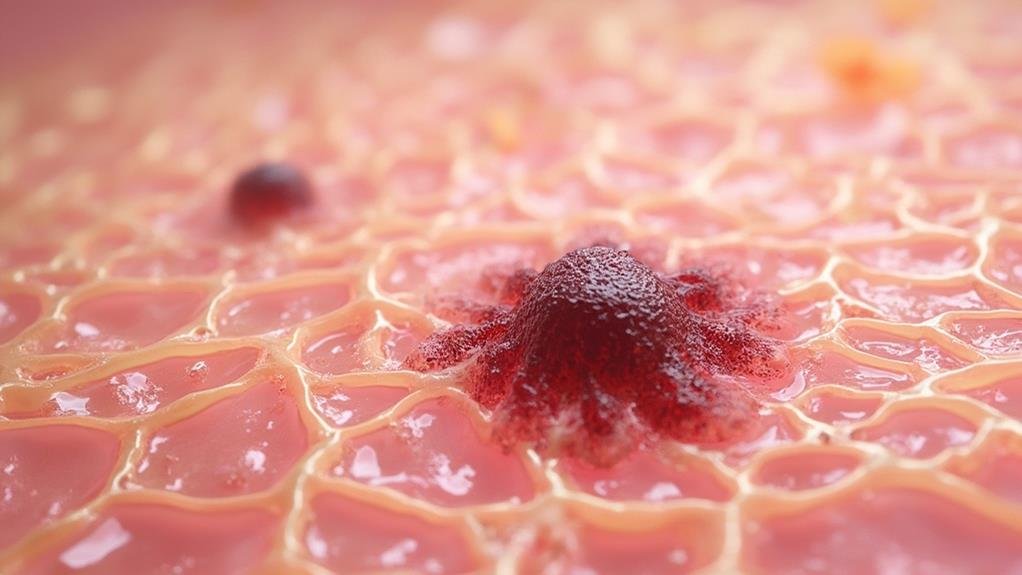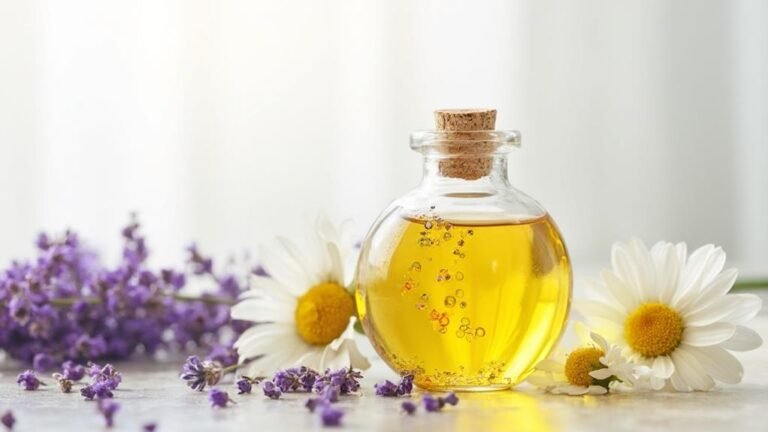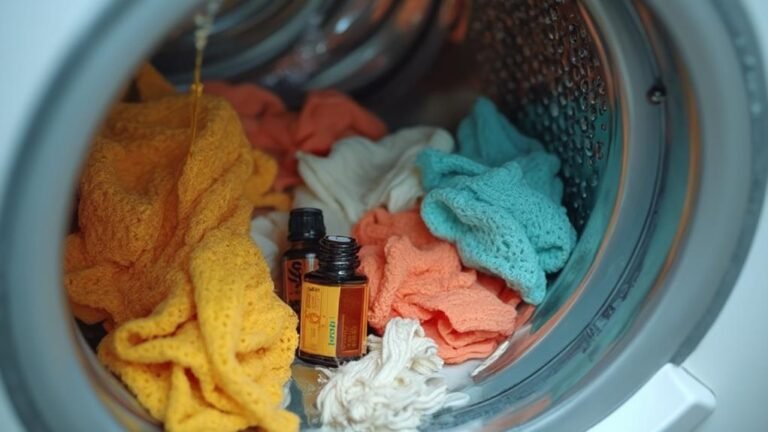Can Essential Oil Remove Moles?
Essential oils can be a natural option for mole removal, but they need to be used with caution.
These oils are strong and may cause skin irritation or allergic reactions if not diluted properly. It’s important to perform a patch test by mixing the essential oil with a carrier oil like coconut or jojoba oil and applying it to a small skin area to check for any negative reactions.
What Causes Moles to Form?

Moles are growths on the skin that appear as brown or black spots. They are caused by the clustering of pigment-producing cells called melanocytes due to melanogenesis, the production of melanin.
Factors contributing to mole formation include:
- Aging: More moles develop with age, especially after sun exposure.
- Sun Exposure: UV radiation stimulates melanocytes to produce more melanin.
- Friction or Trauma: Areas prone to friction, such as armpits, groin, or between fingers, are more likely to develop moles.
- Hormonal Changes: Changes during pregnancy or adolescence can contribute to mole formation.
- Genetics: A family history of moles increases the likelihood of developing them.
Regular skin checks with a dermatologist can help identify suspicious moles that may require further evaluation.
Essential Oils for Mole Removal
Using essential oils mixed with coconut oil for mole removal is a natural approach due to their antiseptic, anti-inflammatory, and antioxidant properties. Some essential oils with potential benefits include:
- Tea Tree Oil: Antimicrobial and antifungal properties to prevent infection and reduce inflammation.
- Castor Oil: Anti-inflammatory properties to reduce mole size by suppressing abnormal cell growth.
- Oregano Oil: Antioxidant properties to prevent cell damage and promote healthy skin growth.
Precautions to Consider
Using essential oils for mole removal isn’t a conventional medical approach. Follow proper usage guidelines to avoid skin irritation or allergic reactions:
- Dilution: Always dilute essential oils in a carrier oil like baby oil to minimize irritation.
- Patch Test: Perform a patch test on a small area of skin before applying the oil to the mole.
- Consultation: Consult with a healthcare professional before using essential oils for mole removal.
How to Use Essential Oils to Remove Moles

Essential oils can be used effectively as a way to remove moles by following the steps below.
- Dilute the Essential Oil: Mix a few drops of the chosen essential oil (e.g., tea tree or frankincense) with a carrier oil like coconut or almond oil to reduce irritation.
- Apply the Mixture: Use a cotton swab to gently apply the diluted oil to the mole, ensuring it covers the entire area.
- Cover and Protect: After application, cover the mole with a bandage to hold the oil in place and enhance absorption.
- Monitor for Changes: Regularly check the mole for any changes and discontinue use if irritation occurs.
Alternatives to Essential Oil Treatment for Mole Removal
If essential oils are not suitable, other options include:
- Surgical Excision: A doctor surgically removes the mole and stitches the surrounding skin.
- Cryotherapy: Liquid nitrogen is applied to freeze the cells, causing them to die and fall off.
- Laser Therapy: A laser targets the pigment cells in the mole, breaking them down.
Other Natural Remedies for Mole Removal
Natural remedies are often sought for mole removal due to their gentle approach and minimal side effects.
Ingredients like apple cider vinegar, tea tree oil, and herbal pastes with antiviral properties are commonly used in natural mole removal treatments.
These remedies are considered safe alternatives for individuals looking to avoid invasive procedures.
Frequently Asked Questions
How Long Does It Take for Essential Oils to Remove Moles?
Changes in mole appearance typically become noticeable within 2-6 weeks. Complete removal may take anywhere from 3-12 months.
Can Essential Oils Prevent New Moles From Forming?
Research is limited, but some studies suggest that certain oils may have preventive effects due to their antioxidant properties.
Are Essential Oils for Mole Removal Suitable for All Skin Types?
Caution is advised. Always perform a patch test and consult a dermatologist if you have sensitive skin or concerns.
Can I Combine Essential Oils With Other Mole Removal Methods?
Combining treatments requires caution. Monitor your skin closely for signs of irritation and adjust your treatment as needed.
Conclusion
Essential oils like tea tree oil and castor oil may help reduce mole appearance due to their beneficial properties. However, their effectiveness for mole removal lacks extensive scientific proof.
Consult a healthcare professional before use, especially if you have sensitive skin or allergies. Further research is needed to fully understand the efficacy of essential oils in mole removal.







